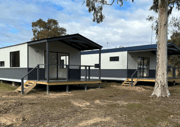‘Free’ GP visits? What the government isn’t telling you about the Medicare overhaul
By
Maan
- Replies 0
Access to affordable healthcare is a key concern for many Australians, particularly as the cost of living continues to rise.
With bulk billing rates fluctuating and out-of-pocket expenses adding up, changes to Medicare could have a significant impact on families, retirees, and individuals alike.
A new plan promises to reshape how Australians access GP services, with potential savings for many.
The government’s latest Medicare overhaul aimed to make GP visits more accessible.
Australians could have saved hundreds of dollars annually, depending on their location and frequency of doctor visits.
With Medicare rebates set to rise from 1 November, the expansion of bulk billing incentives promised to eliminate out-of-pocket costs for many.
The Health Department modelled various scenarios, showing that families, retirees, and young individuals could see significant savings.
An older family with two parents in their 50s and two young adult children could have saved between $264 and $651 a year, especially if one parent required ongoing medical care.
If their GP adopted full bulk billing under the proposed incentive scheme, their out-of-pocket expenses would have dropped to zero.
Younger families, with parents in their 30s and children under five, could have seen savings between $154 and $444 annually.
Minor illnesses and vaccinations were their primary reasons for GP visits.
For self-funded retirees in their early 60s managing chronic conditions, annual savings could have ranged from $174 to $677, depending on their location.
A shift to full bulk billing under the plan would have removed all GP visit costs for them as well.
Young men, who statistically visited doctors less frequently, stood to save up to $109.
Young women, who typically required more frequent healthcare visits, could have saved as much as $221 a year.
Those on a Mental Health Treatment Plan could have seen reductions of up to $197 in yearly out-of-pocket expenses.
The government set a target for nine out of ten GP visits to be bulk billed by 2030, aiming to increase access to healthcare.
Prime Minister Anthony Albanese described the $8 billion investment as a way to deliver ‘free’ GP visits to Australians, positioning Medicare as a central issue in the next federal election.
Following the announcement, the Liberal Party stated they would not oppose the plan, despite criticising Labor’s handling of bulk billing.
‘We’re not going to get in the way of Labor cleaning up the mess that it has made, and it’s important that that mess be cleaned up,’ Liberal treasury spokesman Angus Taylor said.
Opposition leader Peter Dutton pledged to outspend the government’s commitment, proposing a $9 billion investment into Medicare.
While bulk billing rates varied across Australia, some regions had higher coverage than others.
In western and south-western Sydney, over 90 per cent of GP visits were bulk billed.
In Canberra, just over half of visits required an out-of-pocket payment.
The Australian Medical Association welcomed the funding boost but warned that rising operational costs might still prevent some GPs from offering bulk billing.
‘While bulk billing incentives will now be available for all patients, it is important for the public to understand that general practices will still need to set their fees based on an assessment of the costs they face in running a modern medical practice,’ AMA president Dr Danielle McMullen said.
She noted that previous government policies had stripped close to $4 billion from general practice, impacting Medicare rebates.
The announcement was expected to be a major part of Labor’s election campaign, with speculation that the Prime Minister could call an April election within days.
Health Minister Mark Butler reinforced the political stakes, saying: ‘Peter Dutton in 2014 tried to abolish bulk billing altogether, and when he couldn’t do that…he set about…strangling bulk billing slowly by freezing the Medicare rebate.’
Despite bipartisan support for the funding increase, neither party detailed how they planned to finance the multi-billion-dollar commitment.
To learn more on how the government plans to expand bulk billing and what it could mean for you, check out the video below.
If this Medicare overhaul caught your attention, you won’t want to miss these other important changes.

With Medicare set to undergo major changes, do you think these reforms will genuinely improve access to healthcare? Will gaps still remain?
Let us know your thoughts in the comments.
With bulk billing rates fluctuating and out-of-pocket expenses adding up, changes to Medicare could have a significant impact on families, retirees, and individuals alike.
A new plan promises to reshape how Australians access GP services, with potential savings for many.
The government’s latest Medicare overhaul aimed to make GP visits more accessible.
Australians could have saved hundreds of dollars annually, depending on their location and frequency of doctor visits.
With Medicare rebates set to rise from 1 November, the expansion of bulk billing incentives promised to eliminate out-of-pocket costs for many.
The Health Department modelled various scenarios, showing that families, retirees, and young individuals could see significant savings.
An older family with two parents in their 50s and two young adult children could have saved between $264 and $651 a year, especially if one parent required ongoing medical care.
If their GP adopted full bulk billing under the proposed incentive scheme, their out-of-pocket expenses would have dropped to zero.
Younger families, with parents in their 30s and children under five, could have seen savings between $154 and $444 annually.
Minor illnesses and vaccinations were their primary reasons for GP visits.
For self-funded retirees in their early 60s managing chronic conditions, annual savings could have ranged from $174 to $677, depending on their location.
A shift to full bulk billing under the plan would have removed all GP visit costs for them as well.
Young men, who statistically visited doctors less frequently, stood to save up to $109.
Young women, who typically required more frequent healthcare visits, could have saved as much as $221 a year.
Those on a Mental Health Treatment Plan could have seen reductions of up to $197 in yearly out-of-pocket expenses.
The government set a target for nine out of ten GP visits to be bulk billed by 2030, aiming to increase access to healthcare.
Prime Minister Anthony Albanese described the $8 billion investment as a way to deliver ‘free’ GP visits to Australians, positioning Medicare as a central issue in the next federal election.
Following the announcement, the Liberal Party stated they would not oppose the plan, despite criticising Labor’s handling of bulk billing.
‘We’re not going to get in the way of Labor cleaning up the mess that it has made, and it’s important that that mess be cleaned up,’ Liberal treasury spokesman Angus Taylor said.
Opposition leader Peter Dutton pledged to outspend the government’s commitment, proposing a $9 billion investment into Medicare.
While bulk billing rates varied across Australia, some regions had higher coverage than others.
In western and south-western Sydney, over 90 per cent of GP visits were bulk billed.
In Canberra, just over half of visits required an out-of-pocket payment.
The Australian Medical Association welcomed the funding boost but warned that rising operational costs might still prevent some GPs from offering bulk billing.
‘While bulk billing incentives will now be available for all patients, it is important for the public to understand that general practices will still need to set their fees based on an assessment of the costs they face in running a modern medical practice,’ AMA president Dr Danielle McMullen said.
She noted that previous government policies had stripped close to $4 billion from general practice, impacting Medicare rebates.
The announcement was expected to be a major part of Labor’s election campaign, with speculation that the Prime Minister could call an April election within days.
Health Minister Mark Butler reinforced the political stakes, saying: ‘Peter Dutton in 2014 tried to abolish bulk billing altogether, and when he couldn’t do that…he set about…strangling bulk billing slowly by freezing the Medicare rebate.’
Despite bipartisan support for the funding increase, neither party detailed how they planned to finance the multi-billion-dollar commitment.
To learn more on how the government plans to expand bulk billing and what it could mean for you, check out the video below.
If this Medicare overhaul caught your attention, you won’t want to miss these other important changes.
- Medicare distributes millions of dollars from unclaimed benefits. Here's how to claim yours!
- This critical Medicare update affects millions of Aussies—are you prepared?
- ‘I felt really betrayed’: Patients say they’re being overcharged due to a Medicare loophole
- Is Medicare on the brink of collapse? See how it can affect senior care soon
Key Takeaways
- The government’s Medicare overhaul aimed to expand bulk billing incentives, potentially eliminating GP costs and saving Australians hundreds annually.
- Families, retirees, and young individuals could save between $109 and $677, depending on their healthcare needs.
- The Liberal Party backed the plan but criticised Labor, with Peter Dutton proposing a $9 billion Medicare investment.
- The AMA welcomed the funding but warned that rising costs might still lead some GPs to charge fees.
With Medicare set to undergo major changes, do you think these reforms will genuinely improve access to healthcare? Will gaps still remain?
Let us know your thoughts in the comments.








